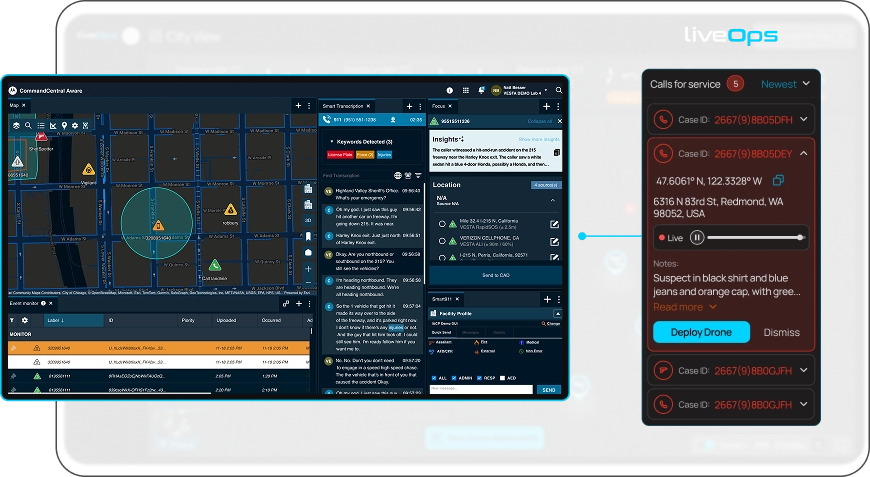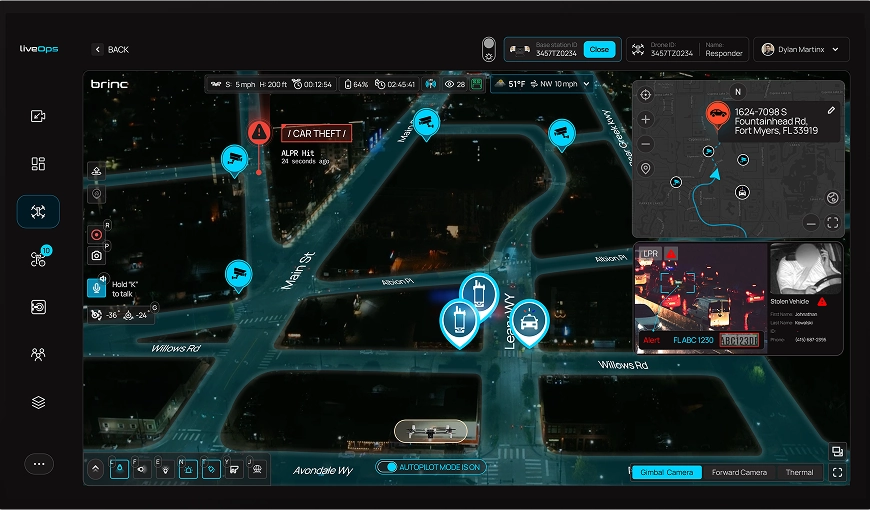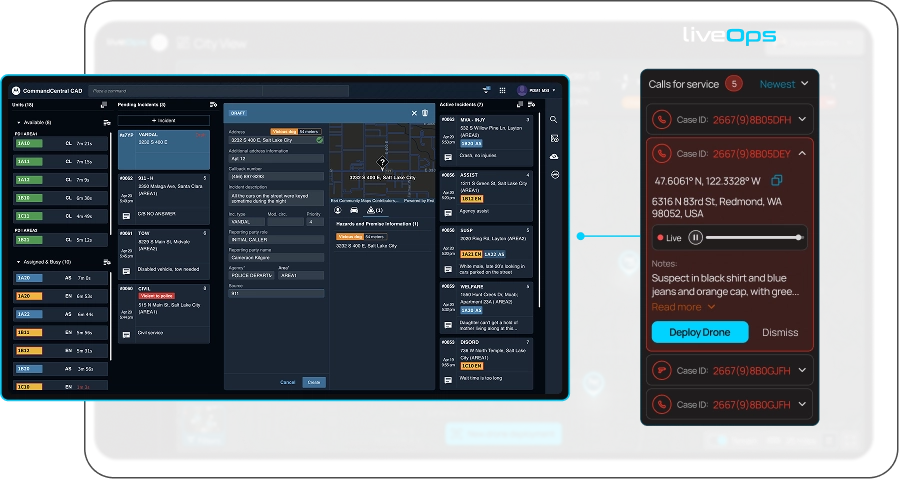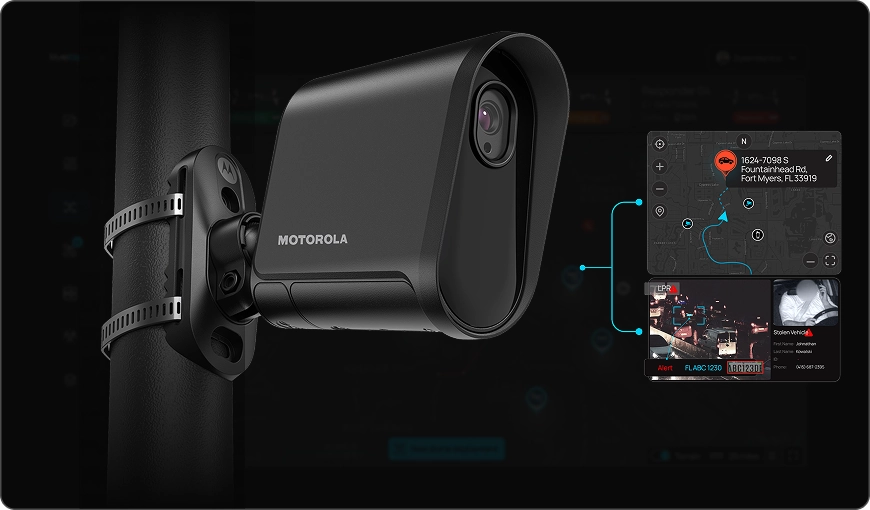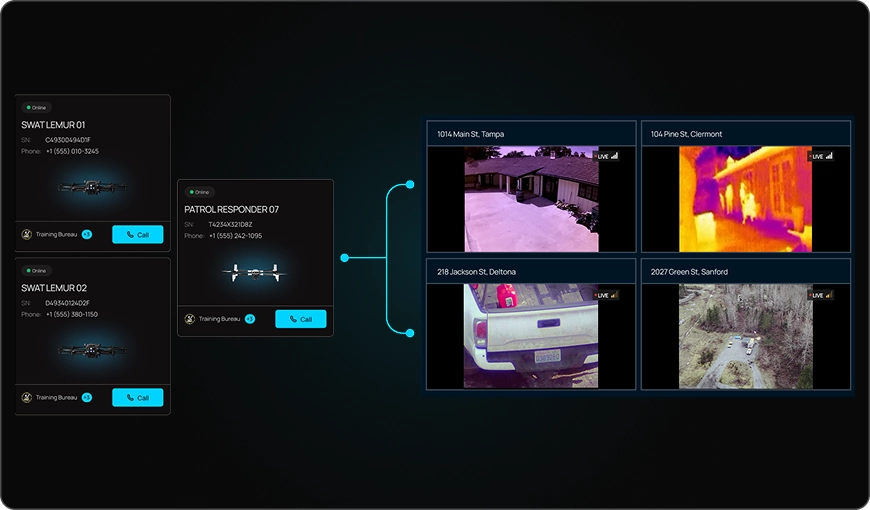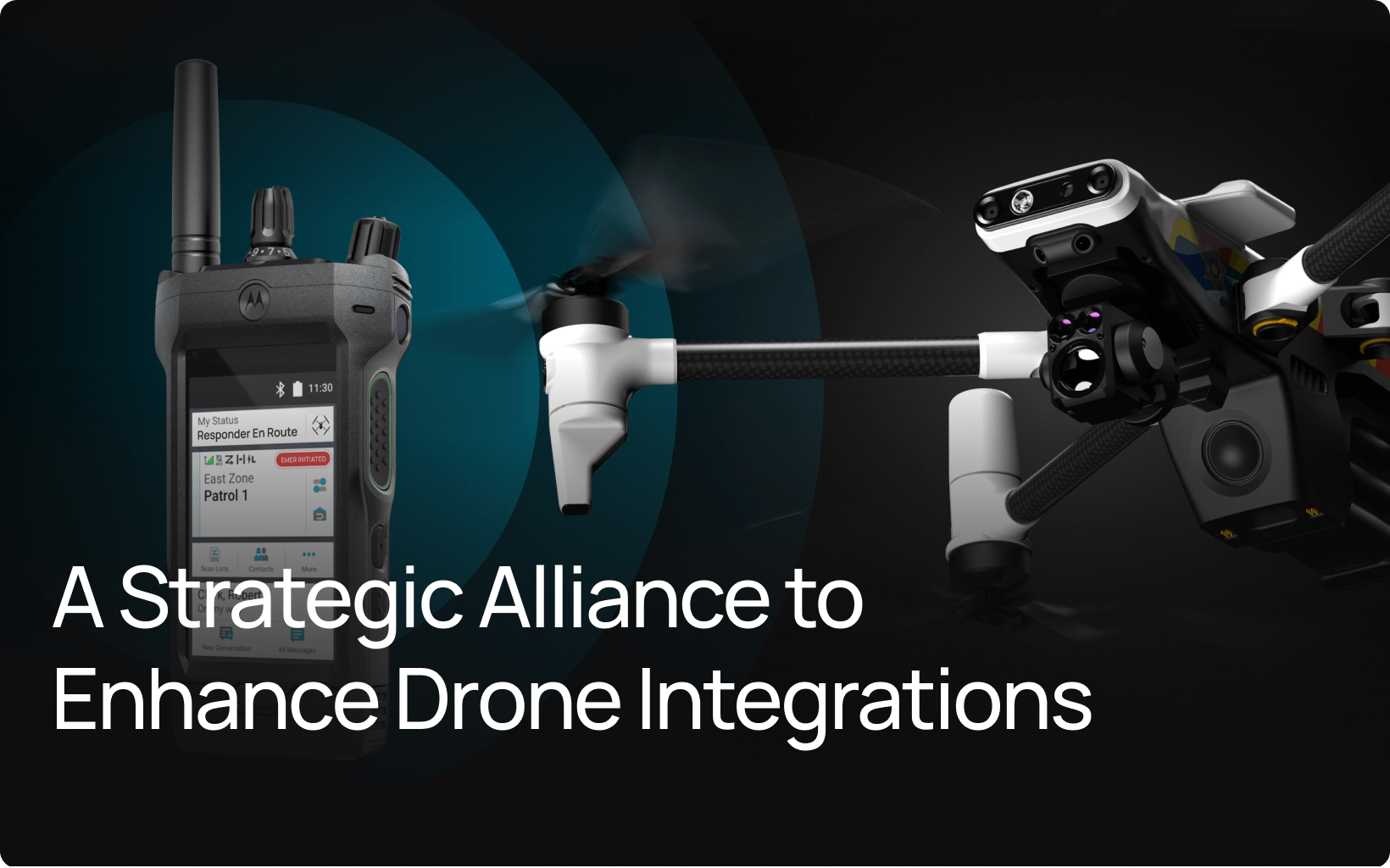Drone as First Responder – Explained

With increasing adoption of drones within public safety agencies, a significant change is happening—the emergence of Drone as First Responder (DFR) programs. Setting itself apart from conventional drone deployments, the DFR approach has gained momentum, signaling a larger shift in the dynamics of emergency response. This article goes into depth about DFR programs, exploring their role in boosting efficiency, tackling staffing constraints, and enhancing de-escalation.
Defining Drone as First Responder Programs
DFR programs redefine emergency response by strategically deploying unmanned aerial vehicles (UAVs) to respond to emergencies. Unlike traditional deployments, where drones are launched after responders arrive, DFR programs position drones at fixed locations to respond immediately upon receiving calls for service.
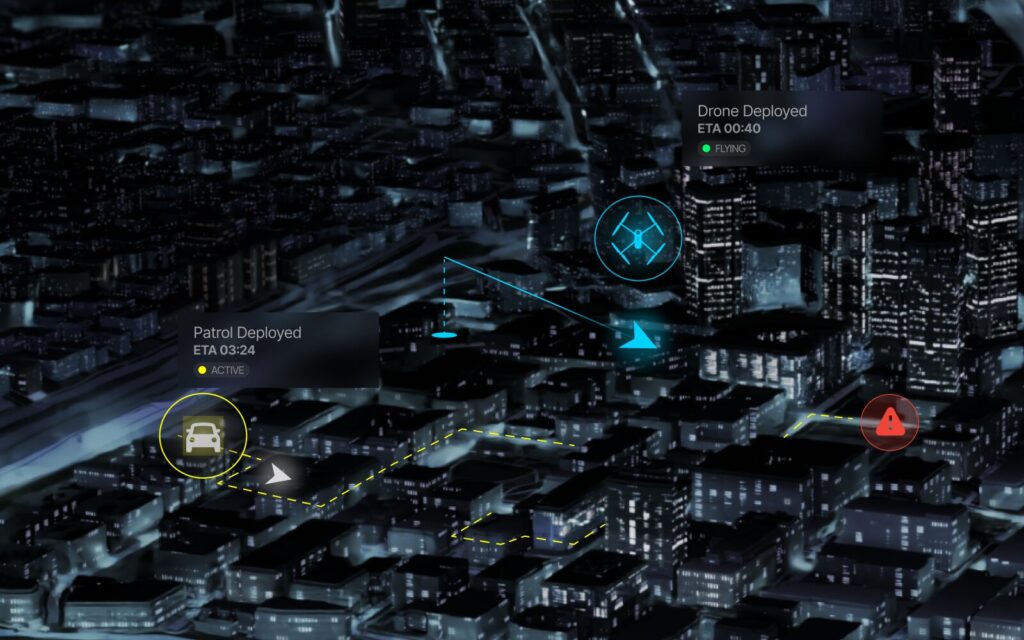
Drone as First Responder (DFR) programs represent a paradigm shift in emergency response strategies, harnessing the strategic deployment of unmanned aerial vehicles (UAVs) to rapidly respond to a spectrum of emergencies. These DFR programs redefine traditional response mechanisms by leveraging the unique capabilities of drones to enhance situational awareness and provide crucial insights before first responders arrive on scene.
The Need for Innovation in Emergency Response
Staffing Constraints and Workload Challenges:
Law enforcement agencies in the modern era grapple with substantial staffing constraints and escalating workloads. The demand for police services has increased over the years, placing an immense burden on existing resources. The shortage of personnel and the corresponding increase in responsibilities strain the capacity of traditional emergency response systems. As a result, law enforcement agencies often find themselves stretched thin, struggling to maintain timely and effective responses to incidents.

Prolonged Response Times:
The inherent challenges of law enforcement, coupled with staffing constraints, contribute to prolonged response times. Addressing these delays is critical to enhancing public safety and ensuring the timely resolution of incidents. Drones present a solution that can overcome the limitations of ground-based units and significantly reduce response times in emergency situations.
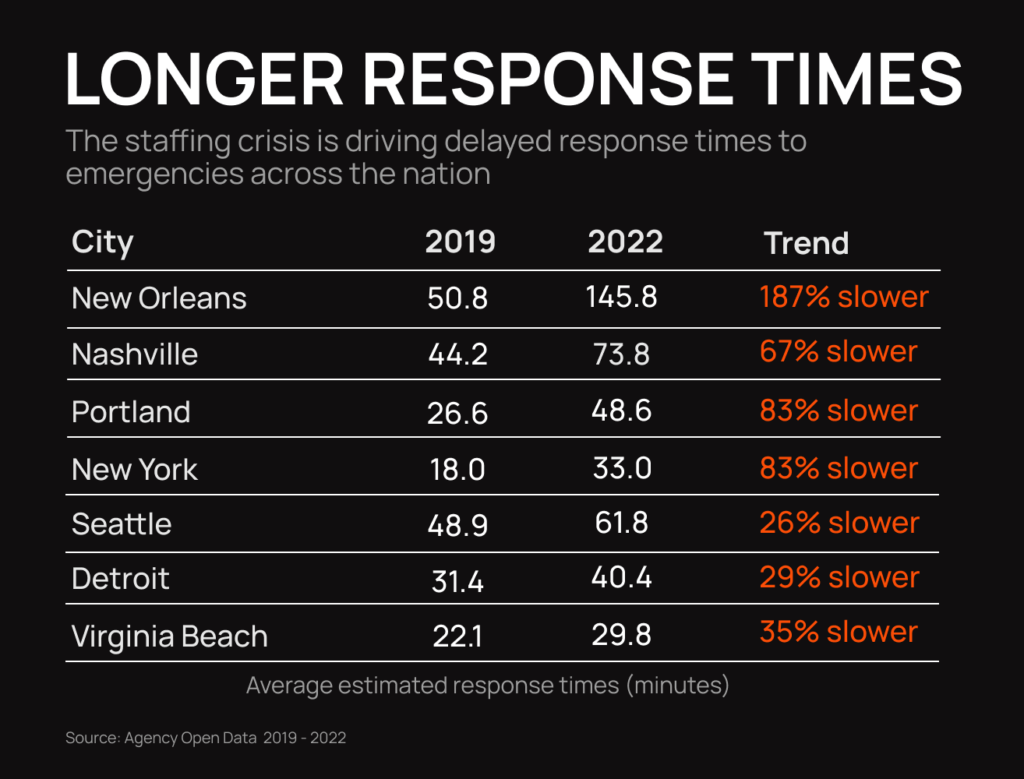
Calls to Rethink Police Response and De-escalation:
In the current socio-political landscape, law enforcement agencies face growing calls for a change in response tactics and a heightened emphasis on de-escalation strategies. Communities are advocating for a shift in policing methods, seeking alternatives to use of force and promoting community-centric approaches. The evolving expectations from the community necessitate innovative tools and methodologies that align with the principles of de-escalation while maintaining public safety.
Time Sensitivity in Emergencies:
Time is of the essence in emergency situations. Seconds count. Whether it’s a search and rescue mission or a medical emergency, delays in response time can directly impact the outcome. Traditional emergency services, constrained by factors like traffic congestion or the need for physical routes, may struggle to meet the urgent demands of certain crimes in progress. Drones, being airborne and equipped with advanced navigation systems, offer a solution that can significantly reduce response times.

Unpredictability of Emergencies:
Emergencies are inherently unpredictable, and the dynamic nature of these situations requires a response system that can adapt quickly. Drones, with their agility and versatility, provide a flexible solution that can be deployed rapidly to assess the evolving circumstances. Whether it’s a natural disaster, a fire, a shooting or a medical crisis, the unpredictable nature of emergencies demands innovative solutions that can swiftly and effectively address emerging challenges.
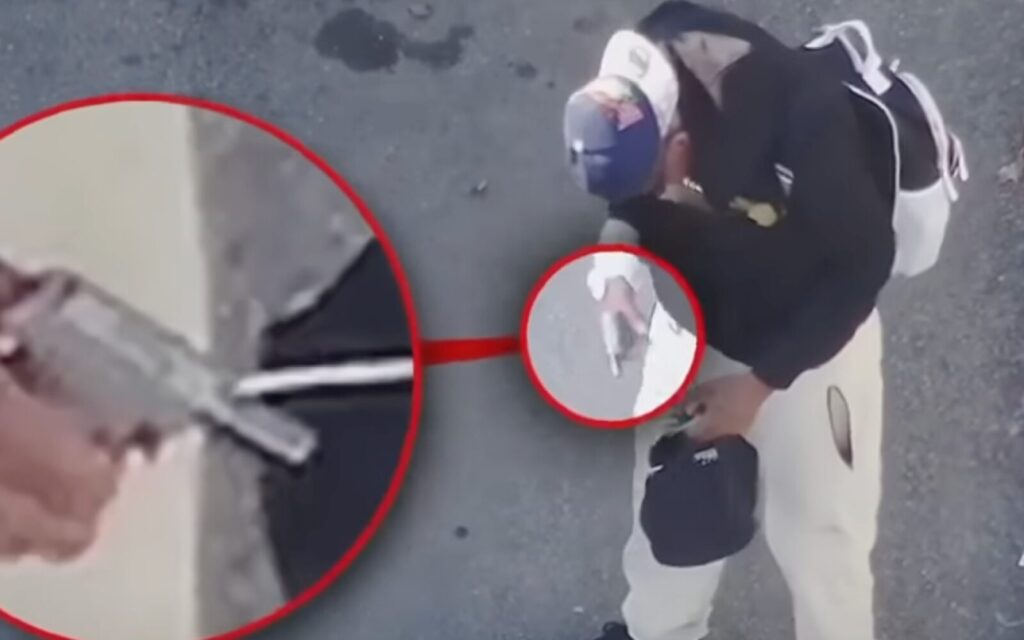
The Solution is DFR
Enhancing Situational Awareness:
Drones equipped with advanced sensors, cameras, and real-time communication capabilities enhance the situational awareness of law enforcement officers. This heightened awareness allows officers to make informed decisions during emergencies, potentially de-escalating situations through a better understanding of the environment. Additionally, the aerial perspective provided by drones can aid in assessing the severity of incidents before ground units arrive, optimizing resource allocation.
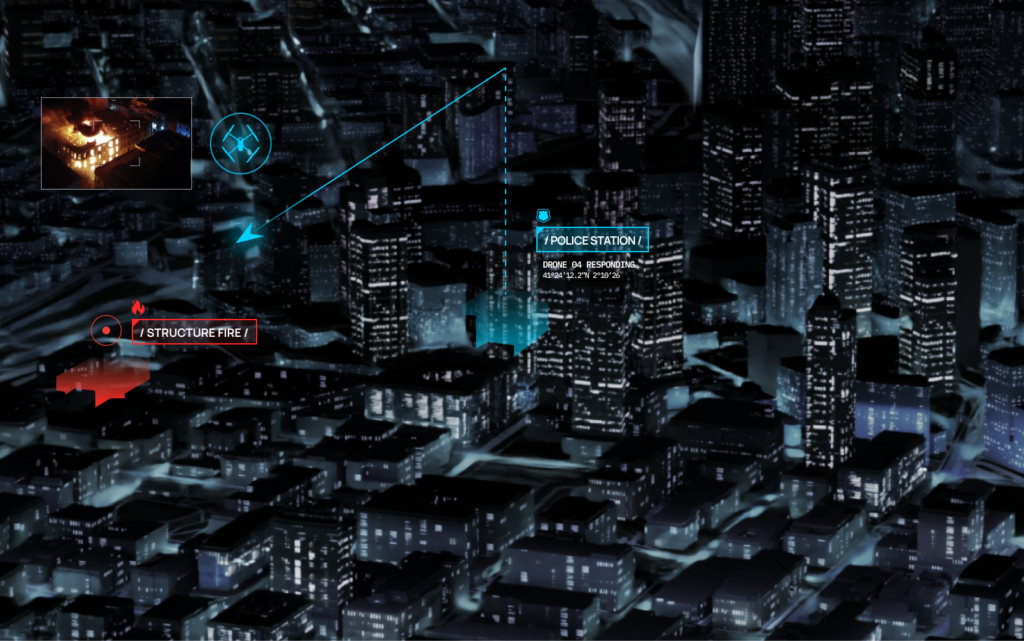
Complementing Traditional Response Methods:
While drones offer innovative solutions, they are not intended to replace traditional response methods. Instead, they complement existing strategies by providing a rapid and aerial perspective that enhances the overall effectiveness of law enforcement agencies. The integration of DFR aligns with the broader objectives of improving response times, increasing situational awareness, and promoting community-centered approaches in line with the evolving expectations of the public.
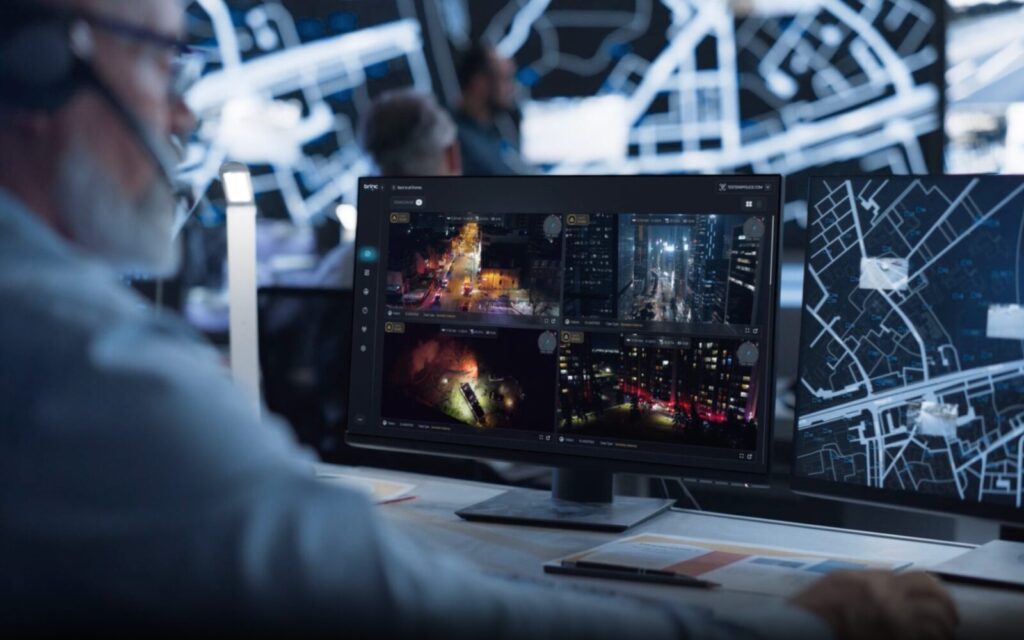
Emergency Incidents for Drone as First Responder
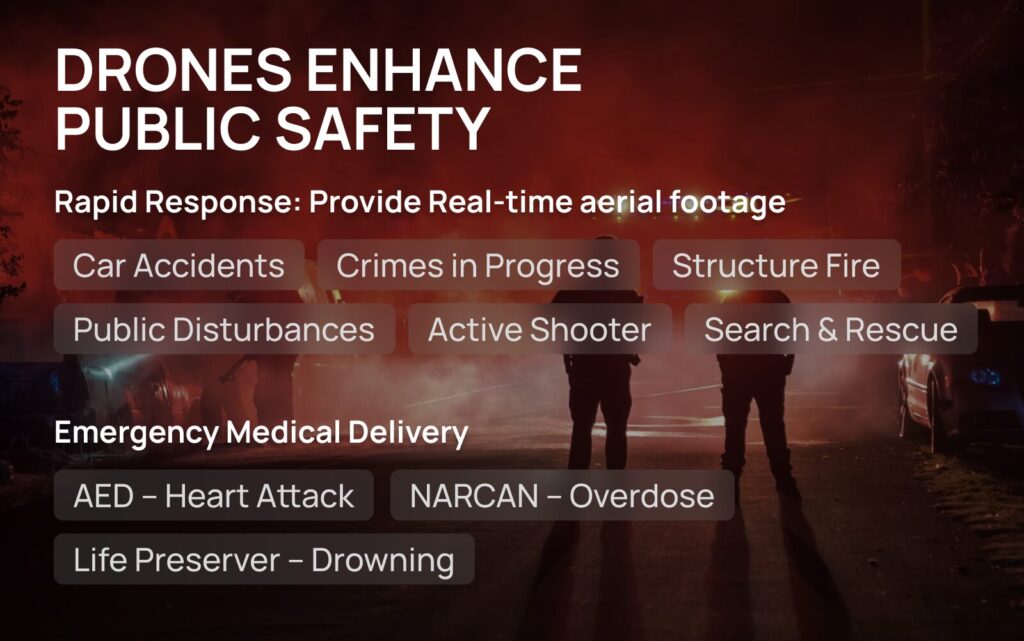
Crimes in Progress
Responding to crimes in progress demands quick yet cautious action from police. When arriving on scene officers must gather information, identify suspects, and assess potential threats while prioritizing safety. They rely on limited updates from dispatchers and observational skills to evaluate the situation upon arrival. With DFR, a drone is able to gather information about the scene, identify suspects, and assess potential threats without putting officers in immediate danger.
Traffic Accidents
When responding to traffic accidents, the severity can vary. DFR offers a swift and efficient means to reach the scene and swiftly survey the accident site, capturing crucial information about the extent of damage, potential injuries, and any hazardous conditions present, providing valuable data to inform their response strategy.

Emergency Payload Delivery
Emergency payload delivery plays a crucial role in providing life-saving assistance in critical situations, such as delivering vital supplies like an Automated External Defibrillator (AED) to someone experiencing cardiac arrest. Utilizing aerial assets equipped with payload delivery capabilities, emergency responders can rapidly transport essential equipment to remote or inaccessible locations where time is of the essence.
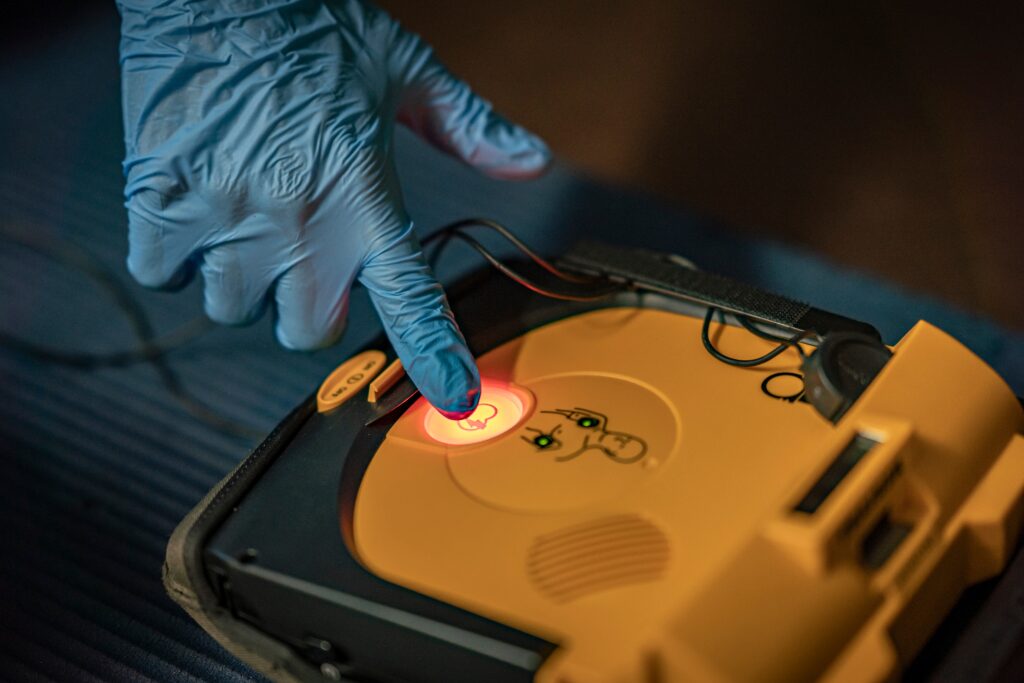
Active Shooter
In the realm of active shooter response, drones serve as invaluable tools, providing real-time visual information to responding officers. By offering a bird’s-eye view of the scene, drones enhance situational awareness, enabling more informed decision-making and strategic deployment of resources.
Conclusion:
In an era defined by staffing constraints, increased workloads, long response times and a call for police reform, the need for innovation in emergency response is more pronounced than ever. Drones as first responder has emerged as a transformative solution, equipping public safety agencies with the tools needed to navigate the complexities of community safety. By embracing technological advancements, agencies can enhance their public safety capabilities, mitigate challenges, and work towards a more efficient and responsive approach to ensuring public safety.



